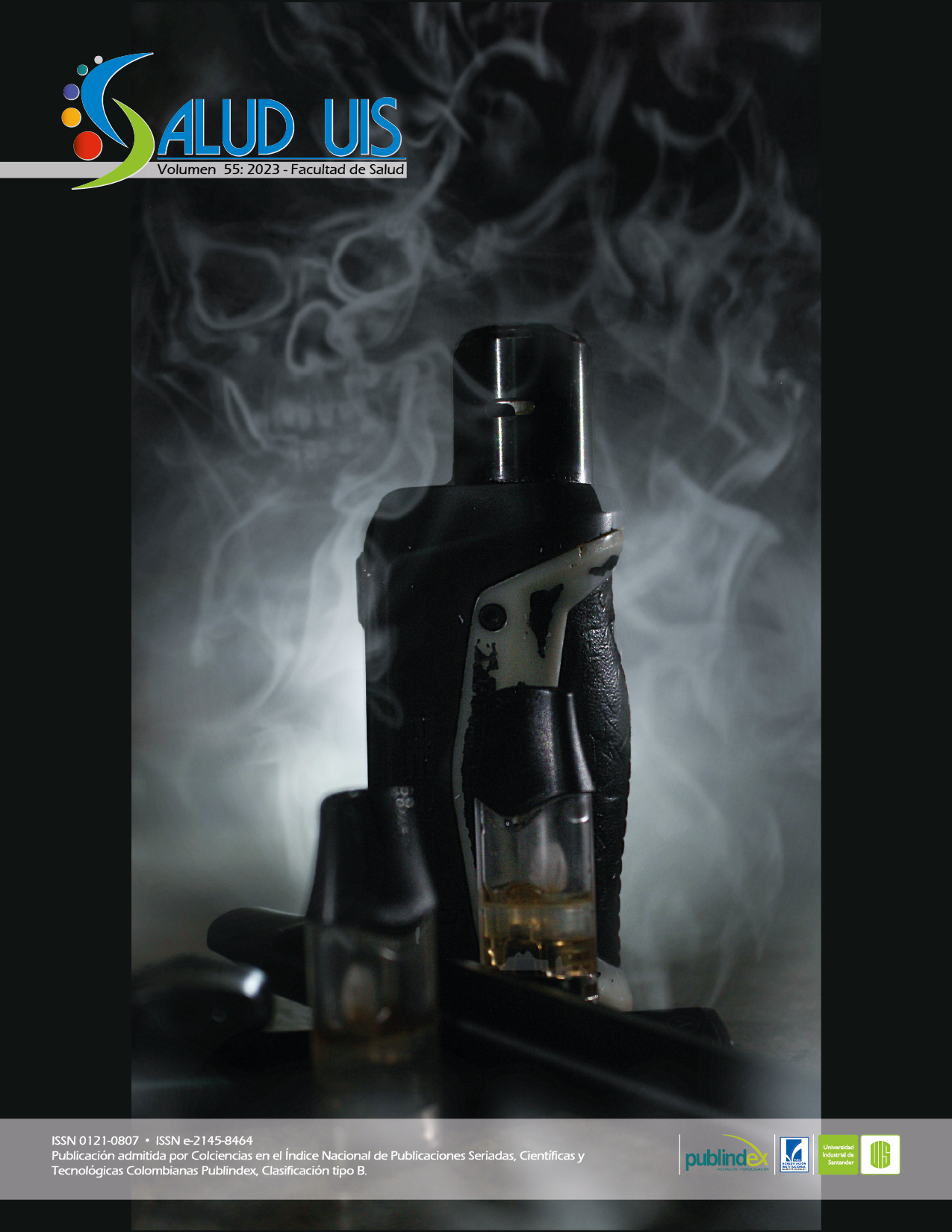Abstract
Introduction: In critically ill patients on mechanical ventilation, the loss of inspiratory and peripheral muscle strength is associated with prolonged mechanical ventilation and failed weaning. Objective: To determine the relationship between handgrip strength and inspiratory muscle strength with the success of the Spontaneous Breathing Trial in adults with ventilatory support greater than 48 hours. Methodology: Prospective observational cross-sectional study performed at a tertiary hospital in Colombia. Handgrip strength and Maximal Inspiratory Pressure were measured once a day before Spontaneous Breathing Trial testing. Pearson’s test and Cohen’s D test were used to analyze correlations. Results: A total of 51 patients were included, 57% male, with a mean age of 51.9±20 years. A positive correlation was identified between Maximal Inspiratory Pressure and grip strength; and a negative correlation between grip strength and Maximal Inspiratory Pressure with the days of stay in the intensive care unit, (r -0.40; p<0.05) and (r -0.45; p<0.05). Conclusions: Handgrip strength and Maximal Inspiratory Pressure were positively correlated with Spontaneous Breathing Trial success. The importance of these measures to guide ventilator disconnection processes is highlighted.
References
Pham T, Brochard LJ, Slutsky AS. Mechanical Ventilation: State of the Art. Mayo Clin Proc. 2017; 92(9): 1382-1400. doi: https://doi.org/10.1016/j. mayocp.2017.05.004
Perkins GD, Mistry D, Gates S, Gao F, Snelson C, Hart N, et al. Effect of protocolized weaning with early extubation to noninvasive ventilation vs invasive weaning on time to liberation from mechanical ventilation among patients with respiratory failure: The breathe randomized clinical trial. JAMA. 2018; 320(18): 1881-1888. doi: https:// doi.org/10.1001/jama.2018.13763
Levine S, Nguyen T, Taylor N, Friscia ME, Budak MT, Rothenberg P, et al. Rapid disuse atrophy of diaphragm fibers in mechanically ventilated humans. N Engl J Med. 2008; 358(13): 1327-1335. doi: https://doi.org/10.1056/NEJMoa070447
Rose L. Strategies for weaning from mechanical ventilation: a state-of-the-art review. Intensive Crit care Nurs. 2015; 31(4): 189-195. doi: https://doi. org/10.1016/j.iccn.2015.07.003
Ward D, Fulbrook P. Nursing strategies for effective weaning of the critically ill mechanically ventilated patient. Crit Care Nurs Clin North Am. 2016; 28(4): 499-512. doi: https://doi.org/10.1016/j. cnc.2016.07.008
Stevens RD, Marshall SA, Cornblath DR, Hoke A, Needham DM, de Jonghe B, et al. A framework for diagnosing and classifying intensive care unit-acquired weakness. Crit Care Med. 2009; 37(10 Suppl): S299-308. doi: https://doi.org/10.1097/ CCM.0b013e3181b6ef67
Morris PE, Goad A, Thompson C, Taylor K, Harry B, Passmore L, et al. Early intensive care unit mobility therapy in the treatment of acute respiratory failure. Crit Care Med. 2008; 36(8): 2238-2243. doi: https:// doi.org/10.1097/CCM.0b013e318180b90e
Schweickert WD, Pohlman MC, Pohlman AS, Nigos C, Pawlik AJ, Esbrook CL, et al. Early physical and occupational therapy in mechanically ventilated, critically ill patients: a randomised controlled trial. Lancet. 2009; 373(9678): 1874-1882. doi: https:// doi.org/10.1016/S0140-6736(09)60658-9
Tzanis G, Vasileiadis I, Zervakis D, Karatzanos E, Dimopoulos S, Pitsolis T, et al. Maximum inspiratory pressure, a surrogate parameter for the assessment of ICU-acquired weakness. BMC Anesthesiol. 2011; 11: 14. doi: https://doi.org/10.1186/1471- 2253-11-14
Ali NA, O’Brien JMJ, Hoffmann SP, Phillips G, Garland A, Finley JCW, et al. Acquired weakness, handgrip strength, and mortality in critically ill patients. Am J Respir Crit Care Med. 2008; 178(3): 261-268. doi: https://doi.org/10.1164/rccm.200712- 1829OC
Cottereau G, Dres M, Avenel A, Fichet J, Jacobs FM, Prat D, et al. Handgrip strength predicts difficult weaning but not extubation failure in mechanically ventilated subjects. Respir Care. 2015; 60(8): 1097- 1104. doi: https://doi.org/10.4187/respcare.03604
Fontela PC, Glaeser SS, Martins LF, Condessa RL, Prediger DT, Forgiarini SG, et al. Medical research council scale predicts spontaneous breathing trial failure and difficult or prolonged weaning of critically ill individuals. Respir Care. 2021; 66(5): 733-741. doi: https://doi.org/10.4187/ respcare.07739
Esteban A, Alía I, Tobin MJ, Gil A, Gordo F, Vallverdú I, et al. Effect of spontaneous breathing trial duration on outcome of attempts to discontinue mechanical ventilation. Spanish Lung Failure Collaborative Group. Am J Respir Crit Care Med. 1999; 159(2): 512-518. doi: https://doi.org/10.1164/ ajrccm.159.2.9803106
American Thoracic Society, European Respiratory Society. ATS/ERS Statement on respiratory muscle testing. Am J Respir Crit Care Med. 2002; 166(4): 518-624. doi: https://doi.org/10.1164/ rccm.166.4.518
MacIntyre NR, Cook DJ, Ely EWJ, Epstein SK, Fink JB, Heffner JE, et al. Evidence-based guidelines for weaning and discontinuing ventilatory support: a collective task force facilitated by the American College of Chest Physicians; the American Association for Respiratory Care; and the American College of Critical Care Medicin. Chest. 2001; 120(6 Suppl): 375S-95S. doi: https://doi.org/10.1378/ chest.120.6_suppl.375s
Landis JR, Koch GG. The measurement of observer agreement for categorical data. Biometrics. 1977; 33(1): 159-174. doi: https://doi. org/10.2307/2529310
Ventura-León J. Otras formas de entender la d de Cohen. Rev Evaluar. 2018; 18(3): 73-78. doi: https://doi.org/10.35670/1667-4545.v18.n3.22305
Powers SK, Kavazis AN, Levine S. Prolonged mechanical ventilation alters diaphragmatic structure and function. Crit Care Med. 2009; 37(10 Suppl): S347-353. doi: https://doi.org/10.1097/ CCM.0b013e3181b6e760
Hermans G, Clerckx B, Vanhullebusch T, Segers J, Vanpee G, Robbeets C, et al. Interobserver agreement of Medical Research Council sum-score and handgrip strength in the intensive care unit. Muscle Nerve. 2012; 45(1): 18-25. doi: https://doi. org/10.1002/mus.22219
Frade-Mera MJ, Regueiro-Díaz N, Díaz-Castellano L, Torres-Valverde L, Alonso-Pérez L, Landívar- Redondo MM, et al. [A first step towards safer sedation and analgesia: A systematic evaluation of outcomes and level of sedation and analgesia in the mechanically ventilated critically ill patient]. Enferm intensiva. 2016; 27(4): 155-67. doi: https:// doi.org/10.1016/j.enfi.2015.10.002
Patel SB, Kress JP. Sedation and analgesia in the mechanically ventilated patient. Am J Respir Crit Care Med. 2012; 185(5): 486-497. doi: https://doi. org/10.1164/rccm.201102-0273CI
Efstathiou ID, Mavrou IP, Grigoriadis KE. Correlation between maximum inspiratory pressure and hand-grip force in healthy young and middle-age individuals. Respir Care. 2016; 61(7): 925-929. doi: https://doi.org/10.4187/respcare.04319
Hermans G, Van den Berghe G. Clinical review: intensive care unit acquired weakness. Crit Care. 2015; 19(1): 274. doi: https://doi.org/10.1186/ s13054-015-0993-7
Hodgson CL, Berney S, Harrold M, Saxena M, Bellomo R. Clinical review: Early patient mobilization in the ICU. Crit Care. 2013; 17(1): 207. doi: https://doi.org/10.1186/cc11820

This work is licensed under a Creative Commons Attribution 4.0 International License.
Copyright (c) 2023 Esther Cecilia Wilches-Luna, Leonardo Arzayus
